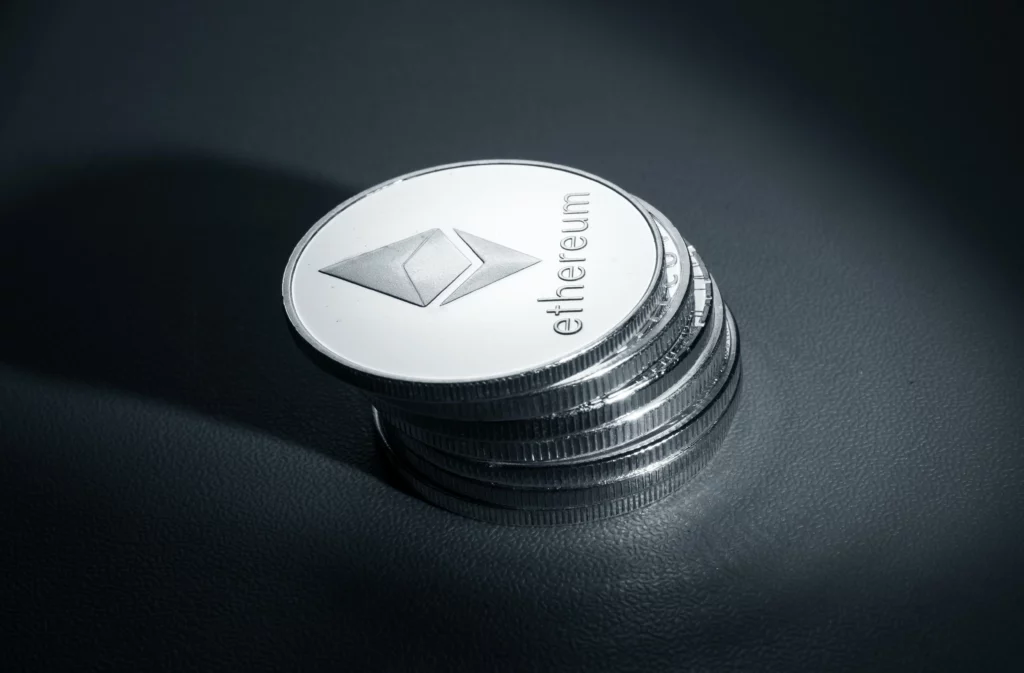Bitcoin vs Ethereum: Should I Buy Ethereum or Bitcoin? (BTC v/s Eth)BTC marks $30K in the updated price of Bitcoin on Moneymystica. Bitcoin and Ethereum are the two most well-known forms of cryptocurrency. Powered by blockchain technology, they share many similarities. However, there are some key distinctions between them. Bitcoin was created in 2009 and is the first and most widely used form of digital currency.
This decentralized form of money is not under any central authority’s control. On the other hand, Ethereum was established in 2015 and served as a platform for running smart contracts based on its decentralized network. Bitcoin is typically viewed as a means of payment and has fewer applications compared to Ethereum. It is also not as versatile or customizable, yet it is accepted by more people and has a larger user base than Ethereum. The latter is still growing but hasn’t yet reached the same level of acceptance as Bitcoin.
As the world of cryptocurrency continues to evolve, two giants remain at the forefront: Bitcoin and Ethereum. With both experiencing significant shifts in value over the years, it’s hard not to compare them – but which one comes out on top? Bitcoin vs Ethereum In this blog post, we’ll take a look at both Bitcoin and Ethereum and explore what 2023 might have in store for these digital currencies. Get ready to dive into the fascinating world of BTC vs ETH!

History Of Bitcoin (BTC)
Read Before any further: Bitcoin Price Prediction 2025
Before we frisk into the comparison lets know every detail about Bitcoin with certain key factors as mentioned below:
- How was Bitcoin Instituted
- Bitcoin Conviction
- Orientation of Bitcoin
- Bitcoin Embrace and Disputation
- Bitcoin Future Projection
1. How was Bitcoin Instituted
The first cryptocurrency, Bitcoin, was created and launched in January 2009 by a computer programmer or group of programmers under the pseudonym Satoshi Nakamoto, whose identity has never been confirmed.
The blockchain system that would be the backbone of the cryptocurrency market was first revealed in a white paper published in 2008 by Bitcoin’s mysterious creator. To secure information, a blockchain replicates and distributes a digital ledger of transactions across a network of computer systems.
2. Bitcoin Conviction
Block – In a block of coins, a millibitcoin (mBTC) is 1/1000 of a Bitcoin. The smallest unit is a satoshi (sat), which is 1/100,000,000. The blockchain creates a block hash when a block is opened, a 256-bit number that encodes the following information:
- The block version used is that of the Bitcoin client
- the hash from the preceding block
- the coinbase transaction which issues a reward in bitcoin
- the number denoting how distant the block is from the genesis one
- the number denoting how distant the block is from the genesis one
- a Merkelroot engaged to store information on all prior blocks
- a target expressed in bits by the network, and finally, a randomly-generated 32-bit nonce
- a timestamp, indicating when this particular block was generated
Blocks are created by the blockchain (Bitcoin vs Ethereum)by entering queued transactions, closing them, and creating hashes. Since each block contains information from the previous block, the blockchain cannot be altered since each block is “chained” to the previous block. A process called mining validates and opens blocks.
3. Orientation of Bitcoin
As of Jan. 29, there were 19,276,325 Bitcoins in existence. The maximum number of coins stipulated to be in existence was 21 million, with Nakamoto capping the supply from the beginning for supply and demand to drive demand and supply. Despite this, Bitcoin mining operators regularly round down calculations as each block of coins is created, which leads experts to believe that the cap will not be reached until 2140.
Mark T. Williams, a professor at Boston University’s Questrom School of Business, once said that Bitcoin has volatility seven times greater than gold, eight times greater than the S&P 500, and 18 times greater than US dollars.
In 2009, Nakamoto released Bitcoin and subsequently mined 1.1 million coins before disappearing in 2010. To shift the platform towards decentralization, Gavin Andresen, previously known as Gavin Bell, accepted control. This resulted in no main administrator, server, or host; rather, all parties involved were connected on a peer-to-peer basis and the blockchain was widely distributed. Transactions were legitimized and confirmed within the system yet this triggered an unexpected price reduction for Bitcoin.
Known to Bitcoin enthusiasts as Bitcoin Pizza Day, the first Bitcoin transaction took place on May 22, 2010. In 2021, at the peak of Bitcoin’s price, Laszlo Hanyecz paid 10,000 BTC for two Papa John’s pizzas that retailed for about $25. The pizzas would have been worth $630 million at the peak of Bitcoin’s price in 2021.
As the Federal Reserve began aggressively increasing interest rates to stave off inflation in 2022, Bitcoin prices experienced sharp declines in what has been termed the “crypto winter.” Bitcoin’s value decreased by more than 60% from a high of $68,990 in Nov 2021, and pessimism remains in the markets. Investor appetite for risk almost vanished. Liquidity became a major issue among the exchanges.
Bitcoin Embrace and Disputation
In seven of the top 10 world economies by GDP, Bitcoin is legal, including the U.S. Nine countries outright ban Bitcoin, including Egypt and Pakistan. Another 42 countries have implicitly banned Bitcoin, including Saudi Arabia and Taiwan.
The government of El Salvador adopted Bitcoin as its legal tender in 2021 to resolve deep economic woes, often as a result of global financial pressures. In the meantime, Bitcoin’s price has plummeted precipitously, the country’s debt obligations remain unmet, and public adoption has been weak.
Ukraine created two crypto wallets at the unveiling of the Russian invasion to raise funds. Within a week, more than $10.2 million had been collected to support both humanitarian efforts and military activities. Ukraine is looking towards blockchain technology to help rebuild its economy. Iran has utilized Bitcoin as a way of bypassing US-imposed financial sanctions and has done over $8 billion worth of transactions with it.
Although Bitcoin appears to be beneficial, it remains controversial because of the potential environmental impact involved in creating it; its mining necessitates a great deal of electricity and is believed to account for 0.10% of all global greenhouse gas emissions, according to analysis on Cambridge Bitcoin Electricity Consumption Index (CEBCI). According to CEBCI’s research, 48.35 million tonnes of carbon dioxide equivalent are emitted annually due to Bitcoin mining operations.
Bitcoin Future Projection

The cryptocurrency industry was dealt a major blow by Sam Bankman-Fried’s collapse of FTX and sister firm Alameda Research on Feb. 27, despite Bitcoin having a banner in the first few months of 2023, up about 40% year to date. Congress will be determining what regulations are needed for Bitcoin in the future, and it remains to be seen whether the industry can maintain its decentralization goals in the face of the fallout.
Blockchain technology is here to stay, with a current market capitalization of over $1 trillion in cryptocurrencies. According to Marion Laboure, senior economist and market strategist at Deutsche Bank Research, this level of commitment drastically changes the technological landscape. In particular, further growth can be expected in NFTs on the Ethereum blockchain, as well as in web3 applications and digital currency gaming.
AI usage is likewise increasing within trading applications, raising an intriguing question: how can we distinguish between AI-generated content and that which is created by humans? Blockchain technology may help us answer this complex differentiation – a factor that could have a profound influence on public acceptance of artificial intelligence.
History Of Ethereum (ETH)
Now Diving Deep into the Introduction of Ethereum (ETH)at Moneymystica (Bitcoin vs Ethereum long term)
Ethereum is a public, open-source service that uses blockchain technology to facilitate smart contracts and cryptocurrency trading without the need for an intermediary. But where did this originate? The cryptocurrency world has its roots in the launch of Bitcoin in 2009 when it was first introduced as an experiment combining an internet asset and the blockchain infrastructure on which it ran. Following this, people adopted online currency and blockchain principles to develop other projects and assets.
Ethereum is a blockchain that offers a wealth of functionality for developers constructing projects based on it. Its native token, Ether (ETH), is used to pay for operations and can be traded on crypto exchanges; its value fluctuates. Other assets, such as ERC-20 tokens, built using Ethereum require using ETH to cover associated fees. Solidity was the language in which it was written. The Ethereum Foundation, a nonprofit organization, serves as one of its stewards.
Rise Of Ethereum (ETH) Blockchain
It would take years for the Ethereum project to develop, despite the birth of the blockchain in July 2015. The Ethereum blockchain’s first iteration, Frontier, hosted smart contracts and proof-of-work (PoW) mining, and it simply got the chain going. The initial launch gave individuals the chance to set up their mining apparatuses and start building on the network.
Since its beginning, Ethereum has undergone various improvements in the form of updates like Byzantium, Constantinople, and the Beacon Chain. The latter established the consensus layer now known as Ethereum 2.0, which changed from a proof-of-work to a proof-of-stake consensus mechanism. Identically, Byzantium, and Constantinople implemented different changes to the blockchain, for instance, reducing payments for miners from five ETH to three post-Byzantium and prepping for the move to PoS through Constantinople.
Ethereum’s scalability issues were brought to the forefront in 2020 and 2021 as decentralized finance (DeFi) projects built on Ethereum received significant attention. The transition to the consensus layer and PoS of Ethereum aims to improve Ethereum’s scalability, though it is happening in stages.
The Decentralized Autonomous Organization (DAO) Hack
Ethereum’s blockchain has been updated over time in several ways as part of Ethereum’s evolution, but some of them were based on events or factors that required them to be changed. An effort to circumvent a hack led to the fork of the decentralized autonomous organization (DAO).
In 2016, the DAO was hacked and 3.6 million ETH was taken from its asset pool. This sparked disagreement within the Ethereum community over how to deal with the situation, as part of the participants, wanted to tamper with the blockchain – an idea that went against the concept of blockchain’s immutability.
Eventually, a majority agreed to a hard fork of the network that would nullify the hack and thus two separate blockchains were created; one containing Ethereum Classic (ETC) which is what we know now as Ethereum, and one recovering the assets lost in the attack.
Ethereum Price

Ethereum’s (ETH)price has been quite volatile over the years. In its early days, ETH traded for next to nothing at times. By early 2017, it had dropped back down to around $15 per coin before skyrocketing up to an all-time high of nearly $1,400 in January 2018. From there, ETH plummeted back down near and below the $100 mark in the months that followed, eventually trending back up this year and surpassing $4,000. Unfortunately, following the Merge event it fell by a significant 55% against Bitcoin.
The transaction hash of block 46147 was used for the first Ethereum transaction on August 7, 2015.
Ethereum was under $1 for most of 2015, by March 2016 it had crossed the $10 mark, briefly reaching $10.03 on March 4.
In May 2017, Ethereum crypto reached the $100 mark. By the end of 2017, Ethereum had reached $774.69 and by the beginning of 2018, it had crossed the $1000 mark.
Ethereum value had also fallen to under $100 apiece by the end of 2018 following the unprecedented cryptocurrency boom (also known as the bitcoin crash).
Ethereum once again rallied from 2019 to 2021, reaching its highest price of $4,815 on November 9, 2021.
In the first half of 2022, Ethereum (ETH) value dropped.
Similarities Between Bitcoin (BTC) & Ethereum (ETH)
Aside from their popularity, Bitcoin and Ethereum share in the widespread adoption of their respective networks. In terms of market capitalization, these two cryptocurrencies reign supreme; Bitcoin has a higher degree of institutional adoption compared to Ethereum which boasts greater active user engagement and far greater day-to-day transactions. As the blockchain industry continues to develop, such strong network adoptions suggest Bitcoin and Ethereum will remain dominant forces. Now let’s head up to (Bitcoin vs Ethereum)
How is Bitcoin Different from Ethereum (Bitcoin vs Ethereum)

Bitcoin and Ethereum are two of the most popular cryptocurrencies in the world. Look into the bitcoin vs Ethereum chart
Bitcoin was the first cryptocurrency, and it remains the largest, with a market cap of over $100 billion. It is also the most well-known, with mainstream media coverage and widespread adoption by businesses and users.
Ethereum, on the other hand, is newer, with a market cap of around $20 billion. It has been gaining ground on Bitcoin in recent years, as its features have attracted more users and investors today & in future
So, what are the differences between Bitcoin vs Ethereum 2023? Here are some of the key points:
Bitcoin is primarily a digital currency, while Ethereum is a decentralized platform that can run smart contracts and decentralized applications (dapps).
-Ethereum has faster transaction times than Bitcoin.
-Bitcoin’s transaction fees are generally lower than Ethereum’s.
-Ethereum offers more flexibility than Bitcoin when it comes to creating new tokens and launching ICOs.
-Ethereum’s blockchain is more easily upgradeable than Bitcoin’s.
As a general-purpose blockchain, Ethereum offers limitless functions, allowing people to transfer value without relying on a central bank. Bitcoin was built to do one thing well — provide people with a way to transfer value from one to another without relying on a central bank. Thus, Ethereum is not only a store of value but is capable of doing many things well too.
In addition, Bitcoin uses a proof-of-work (PoW) consensus mechanism, whereas Ethereum uses a proof-of-stake (PoS) consensus mechanism. In PoW, transactions and new blocks are confirmed by randomly selected validators. In PoS, transactions and new blocks are confirmed by a competitive validation method. Block verification in PoW uses a lot more energy than block verification in PoS, but block verification in PoS requires only a tiny fraction of that energy.
It is possible to use Ethereum as a digital currency, but that was not its primary purpose. Ethereum was designed primarily to monetize Ethereum smart contracts and decentralized applications.
In January 2023, Bitcoin’s market cap will be around $300 billion, whereas Ether’s will be around $153 billion.
Since Ethereum is such a flexible platform, some people are holding their Bitcoins on the Ethereum chain instead of the Bitcoin blockchain, known as a “wrapped bitcoin.” Ether cannot be held on the Bitcoin blockchain. But Bitcoin has become more widely accepted as a cash replacement, and even a Bitcoin search engine exists to find products to buy in Bitcoin.
Bitcoin vs Ethereum Reddit – Bitcoin (BTC) Ethereum (ETH)
Bitcoin VS Ethereum Difference opinions in Twitter by Ben Armstrong & Raoul Pal
Bitcoin vs Ethereum Mining
Bitcoin vs Ethereum: In Bitcoin, miners can validate transactions with the method known as proof of work. Ethereum is considering a shift to another approach – proof of stake – where a miner’s mining power is determined by their coin holdings. This means that those with more coins will have a greater chance of adding blocks to the blockchain than others.
When a miner adds a block to the blockchain in Bitcoin, he is rewarded with 6.25 bitcoins. In Ethereum, a miner receives 3 ether every time a block is added to the blockchain, and the reward will never be halved.
Read Trending: Top 10 cryptos Exchanges
Summary: Bitcoin vs Ethereum Which one is Better?
The answer to the question of which cryptocurrency is better in the choice between Bitcoin vs. Ethereum depends entirely on your requirements. Bitcoin is better suited to peer-to-peer transactions, but Ethereum is better suited to distributed applications and smart contracts. Choosing between Bitcoin and Ethereum is entirely up to you.
FAQ – Bitcoin vs Ethereum
Ethereum or Bitcoin Which is a better long-term investment?
If you plan to invest in Bitcoin or Ethereum, make sure you are willing to accept the high level of risk before you begin. Although crypto assets in general are not a safe investment, Bitcoin may be less risky than Ethereum due to its increased demand and long track record.
Can Ethereum reach $100,000?
Ethereum can reach a value of $100,000 per token, according to many respected crypto experts worldwide.
Which is the best long-term crypto?
Ethereum is the best long-term crypto.
Ashish Dwivedi is the founder and chief editor of MoneyMystica, a top resource for finance, insurance, and share market insights. Driven by a passion for empowering individuals to make informed financial decisions, Ashish uses his extensive knowledge and practical experience to offer clear and actionable advice.




